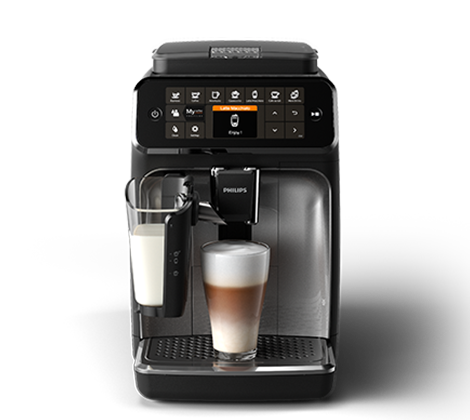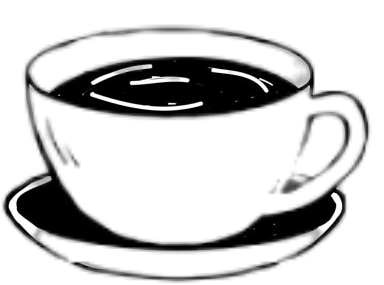#1: Philips 3200

- Easy to use
- Affordable
- Compact design
#2: Philips 4300

- More drink options
- Intuitive touchscreen
- Customizable settings
As a coffee enthusiast, I am always on the lookout for the best brewing machines that can deliver exceptional coffee. Recently, I had the chance to try out the Philips 3200 and Philips 4300 coffee machines, both of which have generated quite a buzz in the coffee community. After extensive testing and daily use, I am excited to share my thoughts on these two machines, ultimately concluding that the Philips 3200 stands out as the superior choice.

Why I Chose to Compare the Philips 3200 vs 4300
When I decided to explore these two coffee machines, I was motivated by my love for a good cup of coffee. I wanted to see if the Philips 4300 could truly outperform its predecessor, the 3200. I envisioned scenarios where I would be using each machine—whether I was entertaining friends, enjoying a quiet morning, or needing a quick caffeine fix before heading out for the day. As I dove into my testing, I kept these scenarios in mind to ensure a comprehensive evaluation.
Design and Build Quality: Philips 3200 vs 4300
When I first unboxed the Philips 3200, I was impressed with its sleek and modern design. The machine has a compact footprint, making it ideal for kitchen counters of all sizes. The intuitive control panel features a colorful touch display that is easy to navigate, even for those who aren’t tech-savvy.
In contrast, the Philips 4300 boasts a more premium look and feel. The materials used in its construction seem to be of higher quality, giving it a slightly more luxurious appearance. However, I found that the extra features and complexity of the interface made it less user-friendly than the 3200.
Brewing Options: Philips 3200 vs 4300
One of the primary reasons I was drawn to these machines was their variety of brewing options. The Philips 3200 offers a selection of six different coffee specialties, including espresso, Americano, and cappuccino. I appreciated the simplicity of choosing my preferred brew with just a few taps on the screen.
On the other hand, the Philips 4300 includes additional options, such as a milk frother for lattes and a more extensive range of coffee strengths. While these features are certainly appealing, I found that the complexity sometimes hindered the overall experience. The 3200’s straightforward approach allowed me to enjoy my coffee without getting lost in a sea of settings.

Coffee Quality: Philips 3200 vs 4300
Ultimately, the taste of the coffee is what matters most to me. Both machines use the same brewing technology, but my experience with the Philips 3200 left a lasting impression. The espresso produced was rich and full-bodied, with a beautiful crema on top.
While the Philips 4300 also delivered good coffee, I noticed that the extraction process wasn’t as consistent. There were times when the espresso lacked the depth of flavor I craved, which was disappointing given the machine's premium price. For someone who truly values the quality of their brew, the 3200 consistently delivered a superior cup.
User-Friendly Interface: Philips 3200 vs 4300
A significant factor in my enjoyment of a coffee machine is how easy it is to use. The Philips 3200 has a clear, straightforward interface that makes brewing a delight. Whether I'm waking up groggy on a Monday morning or hosting friends on a weekend, I can quickly select my coffee choice and have it ready in moments.
In contrast, the Philips 4300, while featuring a more advanced interface, felt somewhat overwhelming at times. Navigating through the settings and options took longer than I expected, especially when I just wanted a quick cup of coffee. For someone like me, who prefers efficiency in the morning, the 3200's simplicity is a huge advantage.
Maintenance and Cleaning: Philips 3200 vs 4300
An often-overlooked aspect of owning a coffee machine is maintenance. The Philips 3200 comes with a removable brewing unit that makes cleaning a breeze. I found that it only took a few minutes to rinse and reset the machine after a week of heavy use.
The Philips 4300, while still manageable in terms of cleaning, requires more frequent attention to its additional components. The milk frother, for instance, has more parts that need to be disassembled and cleaned after each use, which can be tedious for daily coffee drinkers. In my experience, the straightforward maintenance of the 3200 is a significant advantage.

Price and Value: Philips 3200 vs 4300
When it comes to pricing, the Philips 3200 is the more affordable option, often coming in at a significantly lower price point than the 4300. Given the quality of coffee it produces and the ease of use, I believe it offers exceptional value for money.
The Philips 4300, while packed with features, doesn’t justify its higher cost in my opinion. For casual coffee drinkers or those new to brewing, the 3200 provides everything you need without breaking the bank.
Versatility in Daily Use: Philips 3200 vs 4300
One of the things I truly enjoyed about the Philips 3200 was its versatility in daily use. Whether I was brewing a quick espresso before work or making a leisurely cappuccino on the weekends, it handled each task effortlessly. I found myself experimenting with different coffee types and strengths, and the machine consistently rose to the occasion.
The Philips 4300, while versatile, sometimes felt like it was trying to do too much. There were instances when I wanted to make a simple coffee, but the numerous options and settings left me feeling uncertain about the best choice. For someone who enjoys straightforward coffee-making, the 3200’s ease of use allowed me to be spontaneous and creative without the hassle.
The Importance of Aesthetic Appeal: Philips 3200 vs 4300
Another aspect that should not be overlooked is the aesthetic appeal of the machines. The Philips 3200, with its clean lines and modern look, fits seamlessly into my kitchen decor. It feels like a natural extension of my coffee-making routine.
While the Philips 4300 is undoubtedly stylish and has a more premium appearance, I found it to be slightly bulkier, which made it less visually appealing in my compact kitchen. For someone who values both form and function, the 3200 strikes the right balance.
Conclusion: Philips 3200 vs 4300
After extensive testing and usage, I can confidently conclude that the Philips 3200 outshines the 4300 in several key areas. Its user-friendly design, consistent coffee quality, straightforward maintenance, and better price point make it the superior choice for coffee lovers. While the Philips 4300 has its merits, the added complexity and higher cost do not justify the trade-offs.
If you’re in the market for a coffee machine that delivers quality, convenience, and value, I wholeheartedly recommend the Philips 3200. It has transformed my coffee routine and continues to provide me with delicious brews day after day. Whether you're a busy professional, a parent juggling responsibilities, or just someone who loves coffee, the Philips 3200 can make your mornings a little brighter and your afternoons a bit more indulgent.
Frequently Asked Questions
Q1: What is the main difference between the Philips 3200 and Philips 4300 coffee machines?
A1: The primary difference lies in their features and complexity. The Philips 3200 is designed for simplicity, offering a straightforward user interface and essential coffee options. In contrast, the Philips 4300 includes additional features such as a milk frother for lattes and a wider variety of customizable coffee strengths.
Q2: Is the coffee quality different between the two machines?
A2: While both machines utilize similar brewing technology, many users, including myself, have found that the Philips 3200 consistently produces richer and more flavorful coffee compared to the Philips 4300. The extraction process of the 3200 appears to be more consistent, leading to a better overall taste.
Q3: How easy is it to clean and maintain these machines?
A3: The Philips 3200 is designed with ease of maintenance in mind, featuring a removable brewing unit that simplifies cleaning. The Philips 4300 requires more effort, particularly due to its additional components like the milk frother, which necessitates more frequent disassembly and cleaning.
Q4: Which machine is more user-friendly for beginners?
A4: The Philips 3200 is generally considered more user-friendly for beginners due to its straightforward interface and simpler brewing options. The Philips 4300, while offering advanced features, can be overwhelming for those who are not familiar with coffee machines.
Q5: Are both machines capable of making espresso and other coffee drinks?
A5: Yes, both the Philips 3200 and Philips 4300 can make espresso and a variety of coffee drinks. However, the 3200 has a more straightforward approach with fewer options, while the 4300 provides a greater range of customization and specialty drinks.
Q6: What is the price difference between the Philips 3200 and Philips 4300?
A6: The Philips 3200 is typically more affordable, often costing significantly less than the Philips 4300. This price difference reflects the additional features and complexity found in the 4300, which may not be necessary for all users.
Q7: Can I use pre-ground coffee with these machines?
A7: Both the Philips 3200 and 4300 are designed primarily for use with whole beans, as they come with built-in grinders. However, you can use pre-ground coffee in the bypass doser feature, which is available on both machines.
Q8: How do these machines handle different coffee strengths?
A8: The Philips 3200 allows you to adjust the strength of your coffee easily, but the Philips 4300 offers more extensive options for customization, enabling you to fine-tune the strength and flavor profile to your liking.
Q9: What kind of warranty do these machines come with?
A9: Typically, both machines come with a standard manufacturer's warranty of one year. It's important to check the specific warranty details and conditions provided by the retailer or manufacturer upon purchase.
Q10: Are there any special considerations for the water used in these machines?
A10: Yes, using filtered water can help improve the taste of your coffee and prevent mineral buildup in the machine. Regular descaling is also recommended to maintain performance, especially if you live in an area with hard water.
